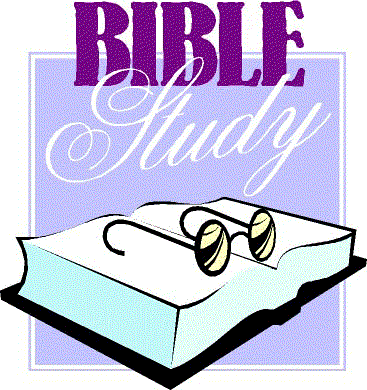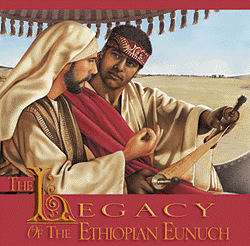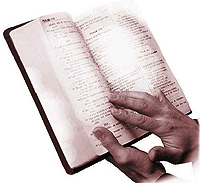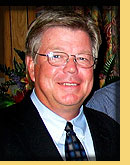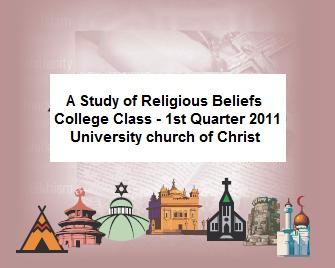Recently a gentleman sent us the following
message.
In the Bible you’re using, you have a
serious, misleading mistranslation — “They pierced my hands and my feet
...” The text should read: “Like a lion (Hebrew KeAri), they are at my
hands and feet.”
The fundamentalists Christian interpreters
actually changed the spelling of the word from KeAri (like a lion) to
Kari. If one then totally ignores Hebrew grammar, one can twist this to
mean “He gouged me,” then, as in the King James Version, they make it
read: “They pierced my hands and feet.”
While we do not have the time to respond to
every quibble offered by skeptical critics, this one, we felt, warranted
consideration. It is clothed in just enough superficial “garb” to feign
the appearance of credibility.
First, we must note that the writer’s
theological perspective is perfectly transparent. That “fundamentalists
Christian” appellation is a dead give-away. We have encountered a reader
whose interest in the Bible is motivated by hostility, not honest
investigation of the complete data.
In attempting to determine the proper
meaning of the controversial phrase, “they pierced my hands and my feet”
(Psa. 22:16 – KJV, ASV, NIV, ESV), all available information must be
taken into consideration — Hebrew manuscripts, other translations, the
New Testament data, etc. Each of these must be given its appropriate
weight.
Hebrew Manuscripts
Old Testament scholars concede that most of
the Hebrew texts available today read “lion,” rather than “pierced.” In
some of these manuscripts “pierced” is a marginal note.
On the other hand, there are Hebrew texts
that read “pierced,” with “lion” in the margin. The same variance is
reflected in English translations, except that the vast majority of the
English versions retain “pierced” in the text, with “lion” relegated to
the footnote in some instances (see ASV, RSV, NIV, ESV).
The two words are strikingly similar in
appearance in the original Hebrew text. The only difference between the
word translated “like a lion,” and the one rendered “they pierced” is in
the length of the upright vowel stroke on the latter word. The two might
easily be confused.
Since the Hebrew had no written vowels —
only vowel sounds — some think the confusion may have resulted from a
misunderstanding in pronunciation.
Craigie offers this view and says that the
“like a lion” rendition “presents numerous problems and can scarcely be
correct” (196). Even the very liberal Interpreter’s Bible, which
repudiates the passage as being prophetic of the crucifixion of Christ,
says that “like a lion” does not make sense in the context (Sclater,
120).
Brown, et al., represent the term in this
fashion: “they have bored (digged, hewn) my hands and my feet” (468).
Professor Baigent of the West London Institute of Higher Education
suggests that the standard Massorite Hebrew text, reflecting “like a
lion,” “seems to be corrupt” (614). Numerous other scholars concur.
In addition, we must note that in the Dead
Sea Scrolls, which pre-date the common Hebrew texts by a thousand years,
the term clearly is “pierced,” not “lion” (VanderKam / Flint, 124).
Ancient Versions
The ancient versions (translations of the
Hebrew text into various languages) overwhelmingly support the reading
“pierced.” This is the case in the Septuagint (Greek version), the
Syriac, Vulgate, Arabic, and the Ethiopic.
One must remember that the Massorite Hebrew
text is from the second century A.D., while the Septuagint dates from
the third century B.C. There is a very powerful point here, to which
Kidner calls attention:
“A strong argument in its [”pierced"] favor
is that the LXX [Septuagint], compiled two centuries before the
crucifixion, and therefore an unbiased witness, understood it so" (107).
So much for our critic’s assertion that
“pierced” is a “fundamentalist Christian” contrivance!
There is another point worthy of
consideration.
In around A.D. 140, a scholar named Aquila,
a native of Pontus, produced a Greek translation of the Old Testament,
the design of which was to rival the Septuagint. Aquila was an apostate
from Christianity who had converted to Judaism. In his translation he
seems to have known nothing of the “like a lion” rendition (see Cook,
IV, 223).
Supplementary Old Testament Support
It need hardly surprise us that the prophets
would focus upon the manner of Jesus’ death inasmuch as the Savior had
to die in some way by which his “blood” would be shed. The blood is the
depository of “life” (Lev. 17:11). By our sins, we have forfeited the
right to live (Gen. 2:17; Rom. 6:23).
Accordingly, in the divine scheme of things,
the Son of God was required to give his “life” (blood) if we were to
live (Mt. 20:28; 26:28; Rom. 3:21-26) — which he voluntarily and
lovingly did.
In view of this, consider two other Old
Testament texts.
The prophet Isaiah declared: “But he was
wounded [”pierced" — Delitzsch, II, 317-18] for our transgressions..."
(53:5). Moreover, Zechariah announced, on behalf of the Messiah:
“And I will pour upon the house of David,
and upon the inhabitants of Jerusalem, the spirit of grace and of
supplication: and they shall look upon me whom they have pierced”
(12:10; cf. Jn. 19:37).
As we shall note subsequently, the language
of Psalm 22:16 is quite similar — but more specific even.
New Testament Evidence
Though the New Testament does not directly
quote Psalm 22:16, there is strong circumstantial evidence that the
phrase in this passage previews the crucifixion, thus containing an
allusion to the method of Jesus’ death.
Only the very obtuse, and those with them
who deny the authority of the New Testament writers, resist the
conclusion that Psalm 22 has, as its general thrust, the mission of the
promised Messiah.
The narrative begins: “My God, my God, why
hast thou forsaken me?” — a question agonizingly framed by the Savior
from the cross (Mt. 27:46; Mk. 15:34). The treatment afforded Christ
during his trial/crucifixion is graphically portrayed in Psalms 22:7-8.
“All they that see me laugh me to scorn:
They shoot out the lip, they shake the head, saying, Commit thyself unto
Jehovah; let him deliver him...” (cf. Lk. 23:35; Mt. 27:39, 43).
Verse 18 depicts the soldiers gambling for
the Lord’s clothes. “They part my garments among them, and upon my
vesture do they cast lots” (cf. Mt. 27:35).
It is in the midst of this context that the
controversial statement is found: “They pierced my hands and my feet.”
Additionally, compare this sentence with the
references in the New Testament to the wounds of the Savior’s hands and
feet (Lk. 24:40; Jn. 20:25). The connection is too obvious to miss if
the student is honest.
It is worthy of note that Tertullian (cir.
A.D. 160-220), one of the post-apostolic “church fathers,” who had
access to evidence older than we possess today, quoted from Psalm 22 in
one of his five books, Against Marcion.
In Book III, which is designed to argue the
Messianic identity of Jesus based on Old Testament prophecy, Tertullian
says that the Lord was “prophetically declaring his glory” when he said,
“They pierced my hands and my feet” (Sect. XIX).
We do not hesitate to say, therefore, that
the preponderance of the evidence lies with our common English versions.
Psalm 22:16 is an explicit prophecy of the crucifixion of Jesus Christ.
As George Rawlinson, Professor of Ancient
History at Oxford, noted: “There are no sufficient critical grounds for
relinquishing” the view that “pierced” is the correct term of the text
(153).
Other Articles by Wayne Jackson
2 John
9 - An Abused Passage
That
Mysterious Disciple
The Value of the Kingdom of Heaven
Did the Early Church Observe the Lord's
Supper Daily?
The New Testament Pattern of Giving
Aid or Addition - What is the Difference?
- Caffin,
B.C. (1950), II Peter – Pulpit Commentary, H.D.M. Spence
and Joseph Exell, eds. (Grand Rapids: Eerdmans).
|
For Past Auburn Beacons go to:
www.aubeacon.com/Bulletins.htm
|
Anyone can join the mailing list for the Auburn Beacon! Send
your request to:
larryrouse@aubeacon.com |


